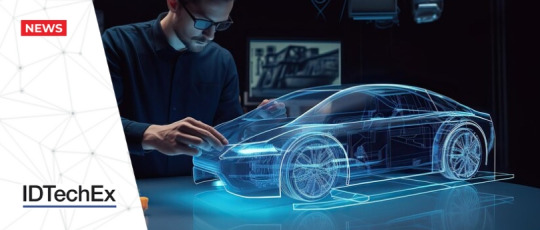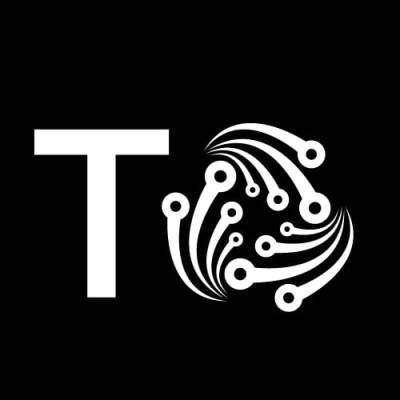#IDTechEx
Explore tagged Tumblr posts
Text
#EVInnovation#BatteryTechnology#SiliconAnode#ElectricVehicles#SustainableEnergy#IDTechEx#FutureOfTransport#powerelectronics#powermanagement#powersemiconductor
0 notes
Text
#EVIndia#ElectricMobility#TwoWheelers#IDTechEx#EVRevolution#GreenTransport#AutoEVTimes#electricvehiclesnews#evtimes#autoevtimes#evbusines
0 notes
Link
#agriculturalmachines#agriculturaltractors#agriculture#batteryelectricvehicle#BEV#CaseIH#construction#electrictractors#electrification#Farmall75CElectric#Futurride#IDTechEx#mining#MonarchTractor#NewHollandAgriculture#NewHollandT4ElectricPower#off-highway#Rigitrac#RigitracSKE40Electric#SeederalMonarchTractorMK-V#Solis#SolisSV26#sustainablemobility
0 notes
Text
IDTechEx Discusses How Tech Giants Could Displace Automotive OEMs

The electrification of cars, driverless driving, and the transition to software-defined vehicles are causing the automotive sector to face unprecedented technical changes. Electric vehicles are getting more and more common, and battery-electric vehicles are predicted to develop significantly. Cars are becoming more and more like software-defined entities with over-the-air upgrades and subscription-based services, and autonomous functions are becoming standard. The question of whether tech and consumer electronics businesses could take on a bigger role—possibly even producing cars—in light of this transition arises.
Although historically the automotive industry's cycles of adaptation were slower, new advances suggest that this is changing. With its over-the-air upgrades, remote servicing, and direct internet sales, Tesla upended the industry. As tech-driven strategies gain traction, traditional dealership-centered methods are changing. Opportunities for tech businesses are growing, as seen by alliances like Sony's relationship with Honda, which leverages AI and entertainment capabilities, and Hyundai and Amazon's joint venture to sell cars on Amazon.com.
The dominance of combustion engines is waning as the automotive industry transitions to electrification. This presents an opportunity for tech businesses to expand from infotainment to vehicle manufacturing. Due to the disparities in the two industries' strengths, smaller businesses find it difficult to strike a balance between cutting-edge technology, high-volume manufacturing, and quality control.
Read More - bit.ly/3u6w3pZ
0 notes
Video
youtube
The Future of Sensor Tech: 2035 Insights!#sciencefather #SensorTechnolog...
Explore the exciting advancements in sensor technology with our quick dive into insights from IDTechEx Research! discover how innovations in sensors will shape industries by 2035. From smart cities to healthcare, the future is here and it's all about enhanced connectivity and precision.
#sciencefather #SensorTechnology #TechTrends #Innovation #FutureTech #IDTechEx #SmartCities#CognitiveScientist, #BehavioralScientist, #Linguist, #Criminologist, #ForensicScientist, #Archaeologist, #MuseumCurator, #Archivist, #LibraryScientist, #InformationScientist, #KnowledgeManager, #PatentExaminer, #InnovationManager#ForestryAward, #WildlifeConservationAward, #UrbanPlanningAward, #TransportationAward, #ArchitectureAward, #designaward
The Scientist Global Awards
Website link : thescientists.net
NominationLink :https://thescientists.net/award-nomination/?ecategory=Awards&rcategory=Awardee
Contact Us : [email protected] ___________________________________
Social Media:
Twitter : https://x.com/ScientistS59906
Linkedin :https://www.linkedin.com/in/scientist-scientist-08838b358/
Pinterest : https://in.pinterest.com/scientists2025/_profile/
Tumblr : https://www.tumblr.com/blog/thescientistglobalawards
FaceBook : https://www.facebook.com/profile.php?id=61574662138238
0 notes
Text
Automotive Wires Market- Opportunity Analysis & Industry Forecast, 2024–2030
Automotive Wires Market Overview:

Request sample :
Automotive wire demand is expected to rise due to the growing trend of lightweight passenger automobiles as a means of reducing carbon emissions. In response to stringent regulations aimed at reducing carbon emissions from automobiles, manufactures will concentrate on producing aluminium automotive wires to reduce the vehicle’s overall weight. This is going to help in achieving the new regulations criteria. The rising focus on enhancing the standards for automotive wire will give opportunities for market expansion. For instance, according to US Auto Outlook 2024, light vehicle sales to grow 3.7% above last year’s level, rising to 16.1 million units. Additionally, the demand for automotive wires is expected to rise in parallel with the volume of vehicles being produced and the increasing demand from customers for better comfort, safety, and convenience.
Market Snapshot
Automotives Wires Market — Report Coverage:
The “Automotive Wires Market Report — Forecast (2024–2030)” by IndustryARC, covers an in-depth analysis of the following segments in the Automotives Wires Market.
AttributeSegment
By Material
· Copper
· Aluminium
· Others
By Vehicle Type
· Passenger Vehicles
· Light Commercial Vehicles
· Heavy Commercial Vehicles
By Propulsion
· ICE Vehicles
· Hybrid Vehicles
· Pure Electric Vehicles
By Transmission Type
· Electric wiring
· Data Transmission
By Application
· Engine wires
· Chassis wires
· Body and Lighting wires
· HVAC wires
· Dashboard / Cabin wires
· Battery wires
· Sensor wires
· Others
By End User
· OEM
· Aftermarket
By Geography
· North America (U.S., Canada and Mexico)
· Europe (Germany, France, UK, Italy, Spain, Russia and Rest of Europe),
· Asia-Pacific (China, Japan, South Korea, India, Australia & New Zealand and Rest of Asia-Pacific),
· South America (Brazil, Argentina, Chile, Colombia and Rest of South America)
· Rest of the World (Middle East and Africa).
Inquiry Before Buying:
COVID-19 / Ukraine Crisis — Impact Analysis:
The COVID-19 pandemic disrupted global supply chains, leading to delays in production and sales of automobiles which led to decrease in automotive wire manufacturing. Governments worldwide imposed lockdowns and restrictions, which led to shut down of mines, factories, and transportation networks, thus disrupting the supply of raw materials such as copper and aluminum, that are used in making automotive wires.
The Russia-Ukraine war had a huge impact on the global automotive wires market. Ukraine is a major manufacturer of copper, a material used as an automotive wiring component. The war has led to mining disruptions, which in turn has caused the shortages and increase in prices globally.
Key Takeaways:
Copper wires segment is Leading the Market
Copper wires segment holds the largest share in the automotive wires market with respect to market segmentation by material. Electrification will be the biggest driver to copper demand for vehicles. Copper is used throughout electric vehicle powertrains, from foils in each cell of the battery to the windings of an electric motor. In total, each electric vehicle can generate over 30kg of additional copper demand. According to a report by IDTechEx, the demand for copper from the automotive industry was just over 3MT in 2023 but is set to increase to 5MT in 2034. Because of its electrical and chemical characteristics, copper is used in every part of the battery. There are lot of tiny cells in the battery, and each one has a copper foil to carry electricity out of the cell. Large copper bars placed throughout the battery also convey the energy from each cell to the high-voltage connections, which in turn power the motor and electronics. Such parts and components with the copper are driving the market growth of copper wires in automotive wires market.
Passenger Vehicles are Leading the Market
Passenger Vehicles segment is leading the Automotive Wires Market by Application. The passenger vehicle category is currently holding the largest share in the automotive wires market because of a combination of factors including large production volumes, a wide range of wiring requirements, technological developments, and the increasing adoption of electric vehicles. For instance, according to Global and EU Auto industry 2023 report by The European Automobile Manufacturers’ Association (ACEA), European car production grew substantially, reaching nearly 15 million units, marking a significant year-on-year improvement of 12.6%. The growing popularity of electric vehicles (EVs) is also contributing to the growth of the passenger vehicle segment in the automotive wires market. EVs have more complex wiring systems due to the integration of batteries, motors, and charging infrastructure.
Schedule A Call :
Integration of Smart Systems in Automobiles
Global demand for automotive wires is primarily driven by the integration of smart systems in automobiles. Modern automobiles have more wires because electronic control units (ECUs) are becoming more and more popular. Each ECU has been connected to a variety of sensors, actuators, and other ECUs through a complex network of connections. Automotive manufacturers are using sophisticated wiring solutions, such as light-weight harnesses, insulated cables and high-temperature-resistant wires to manage the rising number of connections and ensure reliable performance. For instance, In July 2024, Compal Electronics Inc, a leading contract electronics manufacturer from Taiwan, announced plans to build its first European factory in Poland. The company intends to invest more than $15.4 million to target automotive electronics clients. This strategic move marks Compal’s expansion into the European market. The need for complex and more advanced wiring solutions will continue to grow as automobiles become more technologically advanced, fueling the worldwide automotive wires market’s expansion.
Buy Now :
Fluctuating cost of materials to hamper the market

For more details on this report — Request for Sample
Key Market Players:
Product/Service launches, approvals, patents and events, acquisitions, partnerships, and collaborations are key strategies adopted by players in the Automotive Wires Market. The top 10 companies in this industry are listed below:
Aptiv plc
Yazaki Corporation
Furukawa Electric Co., Ltd
Sumitomo wiring systems
Nexans SA
Fujikura Ltd
Samvardhana Motherson International Ltd
Leoni AG
Lear Corporation
THB Electronics
Scope of the Report:
Report MetricDetails
Base Year Considered
2023
Forecast Period
2024–2030
CAGR
5.7%
Market Size in 2030
$ 6.8 Billion
Segments Covered
By Material, By Vehicle Type, By Propulsion, By Transmission Type, By Application, By End User and By Geography.
Geographies Covered
North America (U.S., Canada and Mexico), Europe (Germany, France, UK, Italy, Spain, Russia and Rest of Europe), Asia-Pacific (China, Japan, South Korea, India, Australia & New Zealand and Rest of Asia-Pacific), South America (Brazil, Argentina, Chile, Colombia and Rest of South America), Rest of the World (Middle East and Africa).
Key Market Players
1. Aptiv plc
2. Yazaki Corporation
3. Furukawa Electric Co., Ltd
4. Sumitomo wiring systems
5. Nexans SA
6. Fujikura Ltd
7. Samvardhana Motherson International Ltd
8. Leoni AG
9. Lear Corporation
10. THB Electronics
For more Automotive Market reports, please click here
0 notes
Text
AI Discovers the Quantum Code: Revolutionizing Chemistry - Information Today Internet https://www.merchant-business.com/ai-discovers-the-quantum-code-revolutionizing-chemistry/?feed_id=176318&_unique_id=66c9887c549c4 #GLOBAL - BLOGGER BLOGGER Neural networks now can model molecular states more accurately, thanks to a collaboration between Imperial College and Google DeepMind. This advancement could transform material science and chemistry by predicting molecular behaviors in simulations. Credit: SciTechDaily.comNew research using neural networks, a form of brain-inspired AI, proposes a solution to the tough challenge of modeling the states of molecules.A new study by Imperial College and Google DeepMind introduces a neural network-based method to model molecular excited states. This method could significantly enhance the FermiNet (Fermionic Neural Network), which was the first example where deep learning was used to compute the energy of atoms and molecules from fundamental principles that was accurate enough to be useful.The team tested their approach with a range of examples, with promising results. On a small but complex molecule called the carbon dimer, they achieved a mean absolute error (MAE) of 4 meV (millielectronvolt – a tiny measure of energy), which is five times closer to experimental results than prior gold standard methods reaching 20 meV.Dr. Pfau said: “We tested our method on some of the most challenging systems in computational chemistry, where two electrons are excited simultaneously, and found we were within around 0.1 eV of the most demanding, complex calculations done to date.“Today, we’re making our latest work open source, and hope the research community will build upon our methods to explore the unexpected ways matter interacts with light.”Reference: “Accurate computation of quantum excited states with neural networks” by David Pfau, Simon Axelrod, Halvard Sutterud, Ingrid von Glehn and James S. Spencer, 23 August 2024, Science.DOI: 10.1126/science.adn0137Source of this programme “I like plug-ins, because they are unbelievable!!”“New research using neural networks, a form of brain-inspired AI, proposes a solution to the tough challenge of modeling the states of molecules. A new study by Imperial College and…”Source: Read MoreSource Link: https://scitechdaily.com/ai-discovers-the-quantum-code-revolutionizing-chemistry/#GoogleNews – BLOGGER – GoogleNews http://109.70.148.72/~merchant29/6network/wp-content/uploads/2024/08/analyticsinsight/2024-08/16907c48-4242-47af-9636-7464c4f855ca/IDTechEx-Discovers-Quantum-Technology..jpeg Neural networks now can model molecular states more accurately, thanks to a collaboration between Imperial College and Google DeepMind. This advancement could transform material science and chemistry by predicting molecular behaviors in simulations. Credit: SciTechDaily.com New research using neural networks, a form of brain-inspired AI, proposes a solution to the tough challenge of modeling the … Read More
0 notes
Text
#IDTechEx#AIDriven#BatteryTechnology#battery#safety#energystorage.#powerelectronics#powermanagement#powersemiconductor
0 notes
Text
#IDTechEx#AI is enabling smarter#AIinBatteries#BatterySafety#EnergyStorage#EVTech#SmartBatteries#ArtificialIntelligence#CleanTech#PredictiveMaintenance#FutureEnergy#TechInnovation#electronicsnews#technologynews
0 notes
Link
#Amprius#ArgonneNationalLaboratory#ElectricVehicle#Enevate#EV)sector#Futurride#IDTechEx#LightningMotors#ParacleteEnergy#SilaNano#siliconanodematerial#siliconanodetechnology#SILOSilicon#SM-Silicon/3590#sustainablemobility#Whoop
0 notes
Text
Automotive Wires Market-Industry Forecast, 2024–2030
Automotive Wires Market Overview:

Request Sample :
Automotive wire demand is expected to rise due to the growing trend of lightweight passenger automobiles as a means of reducing carbon emissions. In response to stringent regulations aimed at reducing carbon emissions from automobiles, manufactures will concentrate on producing aluminium automotive wires to reduce the vehicle’s overall weight. This is going to help in achieving the new regulations criteria. The rising focus on enhancing the standards for automotive wire will give opportunities for market expansion. For instance, according to US Auto Outlook 2024, light vehicle sales to grow 3.7% above last year’s level, rising to 16.1 million units. Additionally, the demand for automotive wires is expected to rise in parallel with the volume of vehicles being produced and the increasing demand from customers for better comfort, safety, and convenience.
Market Snapshot:
Automotives Wires Market — Report Coverage:
The “Automotive Wires Market Report — Forecast (2024–2030)” by IndustryARC, covers an in-depth analysis of the following segments in the Automotives Wires Market.
AttributeSegment
By Material
· Copper
· Aluminium
· Others
By Vehicle Type
· Passenger Vehicles
· Light Commercial Vehicles
· Heavy Commercial Vehicles
By Propulsion
· ICE Vehicles
· Hybrid Vehicles
· Pure Electric Vehicles
By Transmission Type
· Electric wiring
· Data Transmission
By Application
· Engine wires
· Chassis wires
· Body and Lighting wires
· HVAC wires
· Dashboard / Cabin wires
· Battery wires
· Sensor wires
· Others
By End User
· OEM
· Aftermarket
By Geography
· North America (U.S., Canada and Mexico)
· Europe (Germany, France, UK, Italy, Spain, Russia and Rest of Europe),
· Asia-Pacific (China, Japan, South Korea, India, Australia & New Zealand and Rest of Asia-Pacific),
· South America (Brazil, Argentina, Chile, Colombia and Rest of South America)
· Rest of the World (Middle East and Africa).
COVID-19 / Ukraine Crisis — Impact Analysis:
The COVID-19 pandemic disrupted global supply chains, leading to delays in production and sales of automobiles which led to decrease in automotive wire manufacturing. Governments worldwide imposed lockdowns and restrictions, which led to shut down of mines, factories, and transportation networks, thus disrupting the supply of raw materials such as copper and aluminum, that are used in making automotive wires.
The Russia-Ukraine war had a huge impact on the global automotive wires market. Ukraine is a major manufacturer of copper, a material used as an automotive wiring component. The war has led to mining disruptions, which in turn has caused the shortages and increase in prices globally.
Key Takeaways:
Copper wires segment is Leading the Market
Copper wires segment holds the largest share in the automotive wires market with respect to market segmentation by material. Electrification will be the biggest driver to copper demand for vehicles. Copper is used throughout electric vehicle powertrains, from foils in each cell of the battery to the windings of an electric motor. In total, each electric vehicle can generate over 30kg of additional copper demand. According to a report by IDTechEx, the demand for copper from the automotive industry was just over 3MT in 2023 but is set to increase to 5MT in 2034. Because of its electrical and chemical characteristics, copper is used in every part of the battery. There are lot of tiny cells in the battery, and each one has a copper foil to carry electricity out of the cell. Large copper bars placed throughout the battery also convey the energy from each cell to the high-voltage connections, which in turn power the motor and electronics. Such parts and components with the copper are driving the market growth of copper wires in automotive wires market.
Inquiry Before Buying :
Passenger Vehicles are Leading the Market
Passenger Vehicles segment is leading the Automotive Wires Market by Application. The passenger vehicle category is currently holding the largest share in the automotive wires market because of a combination of factors including large production volumes, a wide range of wiring requirements, technological developments, and the increasing adoption of electric vehicles. For instance, according to Global and EU Auto industry 2023 report by The European Automobile Manufacturers’ Association (ACEA), European car production grew substantially, reaching nearly 15 million units, marking a significant year-on-year improvement of 12.6%. The growing popularity of electric vehicles (EVs) is also contributing to the growth of the passenger vehicle segment in the automotive wires market. EVs have more complex wiring systems due to the integration of batteries, motors, and charging infrastructure.
Integration of Smart Systems in Automobiles
Global demand for automotive wires is primarily driven by the integration of smart systems in automobiles. Modern automobiles have more wires because electronic control units (ECUs) are becoming more and more popular. Each ECU has been connected to a variety of sensors, actuators, and other ECUs through a complex network of connections. Automotive manufacturers are using sophisticated wiring solutions, such as light-weight harnesses, insulated cables and high-temperature-resistant wires to manage the rising number of connections and ensure reliable performance. For instance, In July 2024, Compal Electronics Inc, a leading contract electronics manufacturer from Taiwan, announced plans to build its first European factory in Poland. The company intends to invest more than $15.4 million to target automotive electronics clients. This strategic move marks Compal’s expansion into the European market. The need for complex and more advanced wiring solutions will continue to grow as automobiles become more technologically advanced, fueling the worldwide automotive wires market’s expansion.
Schedule A Call :
Fluctuating cost of materials to hamper the market
The market for automotive wires is significantly impacted by the price fluctuations of raw materials, particularly copper and aluminum. These materials are necessary for making automobile wires, and the market’s ability to expand may be severely hindered by their price instability. For instance, vehicle automation requires multiple sensors, as well as additional on-board computers. A standard autonomous system, with 12 cameras, seven Light Detection and Ranging sensors (LiDARs), eight radars and one automated driving control unit, will all depend on copper connections to function safely and reliably.
Buy Now :

For more details on this report — Request for Sample
Key Market Players:
Product/Service launches, approvals, patents and events, acquisitions, partnerships, and collaborations are key strategies adopted by players in the Automotive Wires Market. The top 10 companies in this industry are listed below:
Aptiv plc
Yazaki Corporation
Furukawa Electric Co., Ltd
Sumitomo wiring systems
Nexans SA
Fujikura Ltd
Samvardhana Motherson International Ltd
Leoni AG
Lear Corporation
THB Electronics
Scope of the Report:
Report MetricDetails
Base Year Considered
2023
Forecast Period
2024–2030
CAGR
5.7%
Market Size in 2030
$ 6.8 Billion
Segments Covered
By Material, By Vehicle Type, By Propulsion, By Transmission Type, By Application, By End User and By Geography.
Geographies Covered
North America (U.S., Canada and Mexico), Europe (Germany, France, UK, Italy, Spain, Russia and Rest of Europe), Asia-Pacific (China, Japan, South Korea, India, Australia & New Zealand and Rest of Asia-Pacific), South America (Brazil, Argentina, Chile, Colombia and Rest of South America), Rest of the World (Middle East and Africa).
Key Market Players
1. Aptiv plc
2. Yazaki Corporation
3. Furukawa Electric Co., Ltd
4. Sumitomo wiring systems
5. Nexans SA
6. Fujikura Ltd
7. Samvardhana Motherson International Ltd
8. Leoni AG
9. Lear Corporation
10. THB Electronics
For more Automotive Market reports, please click here
0 notes
Text
Solar EV Charging to Bypass the Grid: A US$2.5 Billion Market by 2034, Says IDTechEx
PRNewswire/ -- Electrification of cars, buses, and trucks drastically reduces CO2 emissions at the point of use compared to a diesel or petrol ... http://dlvr.it/T6XHLp
0 notes
Text

IDTechEx Discusses AiP Market Dynamics: Drivers and Challenges in 5G and 6G https://www.microwavejournal.com/articles/41737-idtechex-discusses-aip-market-dynamics-drivers-and-challenges-in-5g-and-6g?utm_source=dlvr.it&utm_medium=tumblr
0 notes
Text
The Future of Quantum Dots in Display Technology 2024-2034: Trends, Markets, Applications
In display technology, quantum dots have already made a big impact. They are color-converting components that have helped to improve the brightness and color gamut of LCDs, making them much more vivid.
But the story is far from over. Quantum dots have a lot more to offer, and new technologies such as microLEDs and electroluminescent quantum dot displays are set to change even more lives. These new technologies can make screens appear on almost any surface, or even just in the air around us. And they can bring us the sci-fi world of inexpensive screens on everything from eyeglasses to car windscreens.

QDs are nanoscale man-made semiconductor crystals that have the unique ability to convert a spectrum of light into different colors by emitting specific wavelengths on excitation. This gives them a much wider color gamut than is What is techogle? possible with traditional liquid crystal displays (LCD). The IDTechEx report The Future of Quantum Dots in Display Technology 2024-2034: Trends, Markets, Applications considers these advances and how they will transform the technology mix of TVs, monitors, notebooks, VR headsets, and other consumer electronics.
The most widespread quantum dot application today is a layer called a quantum dot enhancement film that is placed between the LED backlight and the LCD screen. This helps to reduce the blue-green crosstalk between LEDs and LCD pixels, allowing for higher useful light throughput from the display panel. It also reduces the absorption of light by the LCD color filters, which in turn allows for a larger color gamut in the final image.
This solution is based on the photoluminescent properties of the quantum dot crystals, which are excited by UV or blue light. They then release pure red and green light, which is then used by the color filters of the LCD. This enables a brighter and more colorful display, while still providing good contrast and energy efficiency.
A new generation of quantum dot technologies is being developed, which are not based on cadmium. These new materials are less toxic and have a better environmental profile, which is important for the proliferation of this technology in consumer electronics. They are also more stable, and their synthesis is cheaper and easier to scale than the cadmium-based materials that are currently in use.
The development of non-toxic and more stable quantum dot materials is expected technology website to drive down production costs, enabling them to be used in a wider range of products. This will help to increase the penetration of quantum dot technology in consumer electronic devices, and enable a fuller coverage of the next-generation (DCI-P3) color space. However, there are other challenges that need to be addressed before the technology can achieve its potential, such as toxicity concerns and long-term stability. Research is underway to develop new coatings and manufacturing techniques that will allow for the use of safer and more sustainable materials.
1 note
·
View note
Text
#IDTechEx#UStariffs#EVcharging#powerelectronics#powermanagement#powersemiconductor#SupplyChain#GreenTech
0 notes
Text
0 notes